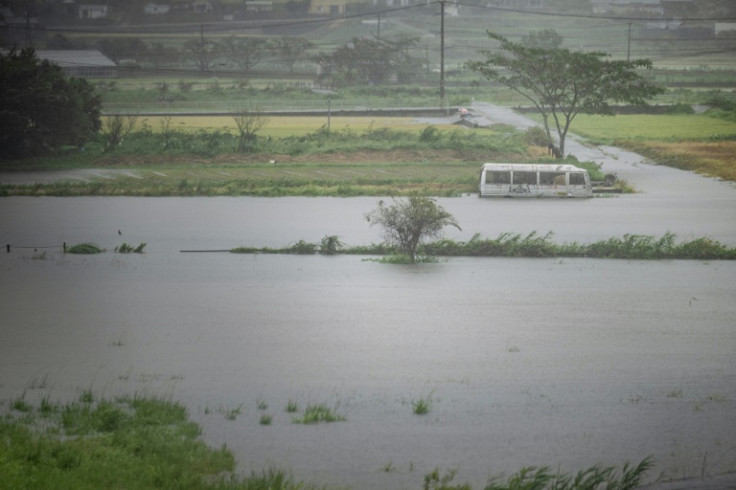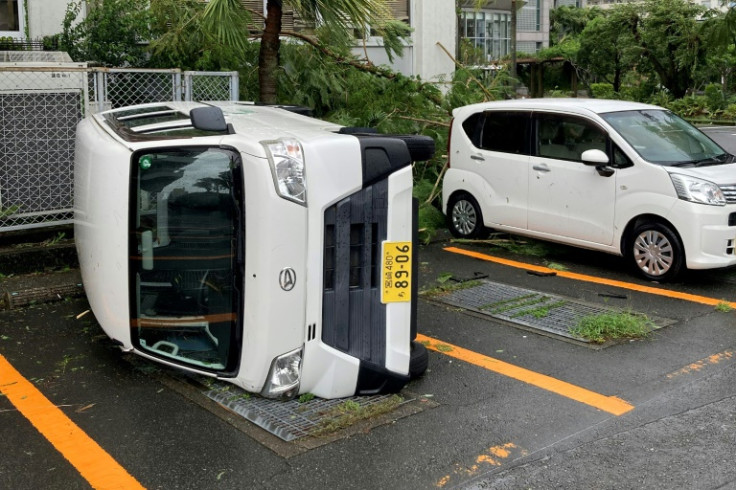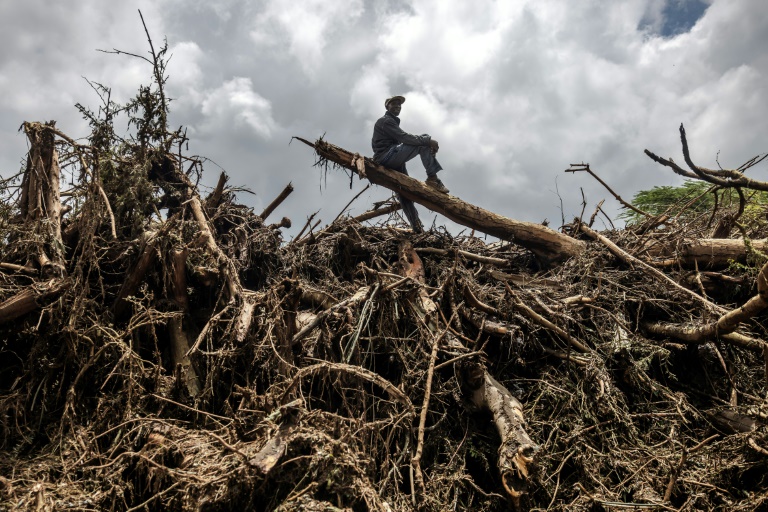Typhoon Shanshan slowly barrelled up the Japanese archipelago Friday, dumping torrential rains and causing transport havoc as its reported death toll reached five.
The typhoon, one of the strongest to hit Japan in decades, had weakened by early morning, though gusts were still reaching 126 kilometres (78 miles) per hour.
Even before making landfall on the island of Kyushu, a landslide caused by the heavy rains preceding it killed three members of the same family late Tuesday in Aichi prefecture, around 1,000 kilometres (600 miles) away.
Two more people were reported to have died including a man last seen on a small boat in Kyushu and another whose two-storey home partially collapsed in Tokushima prefecture on the neighbouring island of Shikoku.
At least 81 others have been injured, including many hurt by broken glass after the typhoon smashed windows and ripped tiles off roofs when it slammed into Kyushu on Thursday with gusts up to 252 kph.
Authorities issued their highest alert in several areas, with more than five million people advised to evacuate, although it was unclear how many did.
As far away as the town of Ninomiya near Tokyo, authorities urged residents to take “immediate measures” to secure safety such as moving to higher floors after a local river flooded.
Some parts of Kyushu saw record rains for August, with the town of Misato recording a staggering 791.5 millimetres (31 inches) in 48 hours, the Japan Meteorological Agency said.
Power cuts hit more than 250,000 Kyushu households but the utility operator said Friday that only 6,500 were still without electricity as engineers repaired damaged transmission lines.
Overnight, many motorways were fully or partially closed in Kyushu, as well as others further afield, media reports said.
Shinkansen bullet trains remained suspended in Kyushu and were also halted on the major route between Tokyo and Osaka, with operators warning of disruptions elsewhere.
Japan Airlines and ANA had already announced the cancellation of more than 600 flights between them for Friday, having scrapped a similar number the previous day, affecting almost 50,000 passengers.
Auto giant Toyota suspended production at all 14 of its factories in Japan.
Nissan and Honda also halted operations at their Kyushu plants, as did chipmakers including Tokyo Electron, reports said.
Shanshan comes in the wake of Typhoon Ampil, which dumped heavy rain that disrupted hundreds of flights and trains this month but caused only minor injuries and damage.
Another released by World Weather Attribution (WWA) on Thursday said that climate change turbocharged Typhoon Gaemi, which killed dozens of people across the Philippines, Taiwan and China this year.
AFP

AFP

AFP







